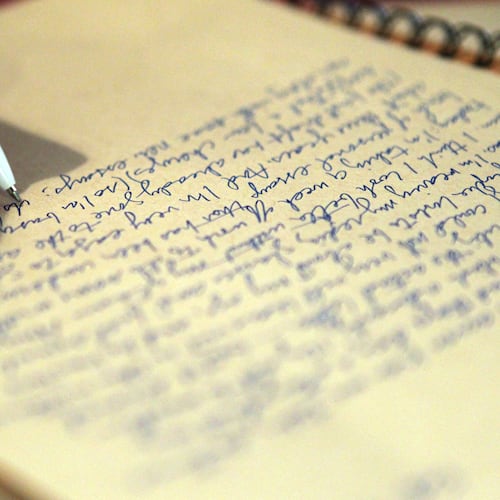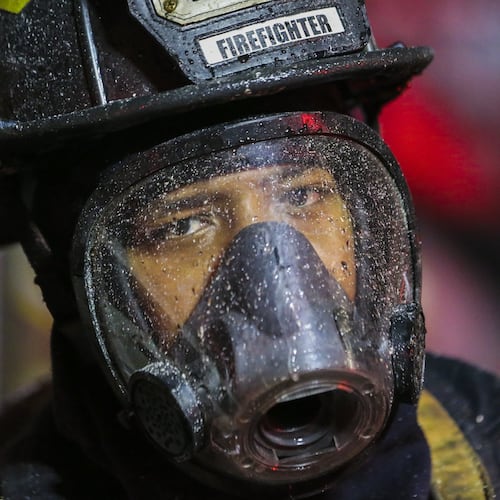Scientists and physicians, politicians and celebrities, sports figures, family members and religious leaders have all shared the message: a vaccination is the best defense against serious illness and possible death from COVID-19. And yet more than one-third of those eligible in the U.S. are not fully vaccinated.
Can the artists and culture-bearers among us help move people who are unvaccinated to action? That’s the hope of a new initiative from the Centers for Disease Control and Prevention (CDC) to build vaccine confidence across the country.
As trusted influencers, artists and culture-bearers — respected community members who embody and transmit cultural practices -- communicate information in ways that make it both understandable and memorable. In their arts and cultural practices, they facilitate reflection and dialogue that can make us feel, understand and act in new ways. They drive social change by influencing individual as well as collective behavior.
Credit: contributed
Credit: contributed
They have the power to help us stop this pandemic.
In August, the CDC partnered with the Georgia Department of Public Health and two local arts organizations in Atlanta to pilot a demonstration project on how arts and culture can empower vaccine confidence. They brought art installations and vaccine clinics to 10 neighborhoods and a major sporting event. By the conclusion of the project, which took place as cases and hospitalizations skyrocketed in Georgia, thousands of people were reached and vaccinations happened at pop-up sites.
The CDC also collaborated with the University of Florida Center for Arts in Medicine on two field guides [vaccinate.arts.ufl.edu] and a “Vaccine Confidence Arts Response Repository” to help other public health organizations partner with local artists and culture-bearers on vaccination confidence campaigns and programs in their communities.
The repository includes examples of artistic and cultural programs and partnerships aimed at boosting vaccine confidence, from the city of New Orleans’ “Sleeves Up NOLA” campaign that builds on Mardi Gras arts forms to a multilingual “COVID-19 Vaccine Art Competition” sponsored by Mecklenburg County and the city of Charlotte in North Carolina.
The CDC Foundation recently announced a request for proposals offering $2.1 million in funding for 30 arts and culture organizations interested in improving vaccine confidence and acceptance through any art forms in communities with low COVID-19 vaccination rates.
As a country, we have been slow to embrace the arts and culture sector as key partners in major public health initiatives, but there is plenty of evidence from other nations that these collaborations work. One example: Rock Point 256, a serialized radio drama, explored critical health issues such as HIV prevention for young people in Uganda; the Johns Hopkins Center for Communications Programs found 75% of listeners reported it influenced them to take positive action.
This is not to say that the positioning of artists and culture-bearers as trusted influencers has been completely overlooked by public health organizations in this pandemic. Earlier this year, arts and government entities in San Francisco enlisted 60 performing artists as community health ambassadors to share vaccination and pandemic safety messages in their neighborhoods through performing arts, murals and video. The city of Louisville in Kentucky launched a series of billboards and digital ads featuring artwork by local youth and community members to promote public health resources and COVID-19 information.
But at this critical juncture in the pandemic, with the delta variant’s recent surge throughout the U.S., there is a critical need to bring science-based health information to those who remain ambivalent or resistant to vaccination. I believe many of them will listen to the artists and culture-bearers.
Aesthetic experiences — in music, stories, dance, poetry, photography, paintings, spoken word, theatre, video, cultural celebrations, graphic design, culinary arts, spiritual practices — can sometimes reach us when nothing else can.
If you work in a city or county where hesitancy is a challenge, the CDC’s guides can be valuable tools to increase vaccine confidence by engaging artists and culture-bearers in your community.
As a community member, you can lobby local public health or government officials to use these resources to overcome this pandemic.
Now, more than ever, we need the help of artists and culture-bearers. Vaccination is our best chance for controlling this pandemic, and we need to enlist every available resource to help us do that.
Jill Sonke is the director of the Center for Arts in Medicine at the University of Florida and senior advisor to the CDC’s Vaccine Confidence and Demand Team on the COVID-19 Vaccine Task Force.
About the Author
Keep Reading
The Latest
Featured



